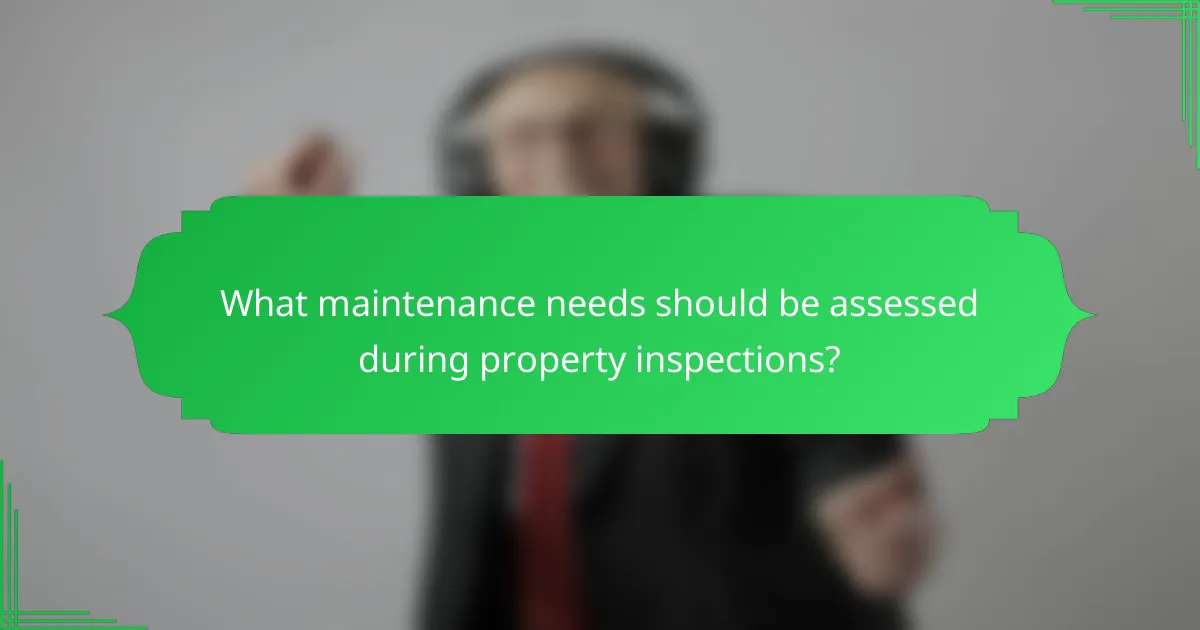Investment property inspections play a vital role in making informed rental decisions by uncovering potential maintenance needs and evaluating profitability. A comprehensive inspection allows investors to assess critical areas such as structural integrity and essential systems, helping to avoid unexpected costs and ensuring the property remains in good condition. By analyzing both potential rental income and operating expenses, investors can better understand the financial viability of their properties and refine their investment strategies.

How to evaluate investment property inspections for better rental decisions?
Evaluating investment property inspections is crucial for making informed rental decisions. A thorough inspection helps identify potential maintenance needs and assess the property’s profitability, ultimately guiding your investment strategy.
Importance of thorough inspections
Thorough inspections are essential to uncover hidden issues that could impact rental income and property value. They provide a comprehensive overview of the property’s condition, ensuring that you are aware of any necessary repairs or upgrades before finalizing your investment.
Investors who skip or rush through inspections may face unexpected costs down the line, which can significantly reduce profitability. A detailed inspection can help you negotiate better purchase terms or avoid properties that require excessive maintenance.
Key inspection criteria
When evaluating an investment property, focus on several key criteria during the inspection. These include the condition of the roof, plumbing, electrical systems, and structural integrity. Each of these elements plays a vital role in the overall functionality and safety of the property.
Additionally, consider the age of appliances and HVAC systems, as older units may require replacement soon, leading to increased costs. A checklist can help ensure you cover all necessary aspects during the inspection process.
Common red flags to identify
During an inspection, be on the lookout for common red flags that may indicate larger issues. Signs of water damage, such as stains on ceilings or walls, can suggest leaks that may require extensive repairs. Cracks in the foundation or walls may also point to structural problems.
Other red flags include outdated electrical systems, pest infestations, and poor drainage around the property. Identifying these issues early can save you from costly repairs and help you make a more informed investment decision.

What maintenance needs should be assessed during property inspections?
During property inspections, it is crucial to assess various maintenance needs to ensure the property remains in good condition and to avoid unexpected costs. Key areas to evaluate include structural integrity, plumbing, electrical systems, and HVAC systems, as these can significantly impact rental decisions and profitability.
Essential maintenance checks
Essential maintenance checks focus on the most critical components of a property. Inspect the roof for leaks or damage, as repairs can be costly if neglected. Check the foundation for cracks, which can indicate serious structural issues.
Additionally, evaluate plumbing systems for leaks and water pressure issues. Ensure that electrical systems are up to code, with no exposed wiring or outdated panels. Lastly, assess the HVAC system for functionality, as a well-maintained system ensures tenant comfort and reduces energy costs.
Long-term maintenance planning
Long-term maintenance planning involves scheduling regular inspections and repairs to prevent larger issues from arising. Create a maintenance calendar that outlines when to check major systems, such as the roof, plumbing, and HVAC, ideally every six months to a year.
Consider setting aside a budget for ongoing maintenance, typically around 1-3% of the property’s value annually. This proactive approach helps in managing costs and maintaining the property’s value over time, ultimately leading to better rental decisions and increased profitability.

How to determine the profitability of an investment property?
To determine the profitability of an investment property, assess both the potential rental income and the associated operating expenses. This evaluation helps investors make informed decisions about their investments and understand the financial viability of the property.
Calculating potential rental income
Potential rental income is the total amount you can earn from renting out your property. To estimate this, research comparable rental properties in the area to gauge average rents. Consider factors such as property size, location, and amenities, which can influence rental rates.
For example, if similar properties in your neighborhood rent for between $1,200 and $1,500 per month, you can project your rental income within this range. Additionally, factor in potential vacancies and seasonal fluctuations to arrive at a more realistic income estimate.
Understanding operating expenses
Operating expenses are the costs associated with maintaining and managing the property. Common expenses include property taxes, insurance, maintenance, and management fees. It’s crucial to account for these costs to accurately assess profitability.
A general rule of thumb is to expect operating expenses to consume about 30-50% of your rental income. For instance, if you anticipate earning $1,500 monthly, plan for $450 to $750 in expenses. This will help you understand your net income and overall profitability.
Evaluating market trends
Market trends significantly impact the profitability of an investment property. Analyzing local real estate trends, such as property value appreciation and rental demand, can provide insights into future profitability. Look for indicators like job growth, population changes, and economic development in the area.
For example, if a neighborhood is experiencing an influx of new businesses and residents, property values and rental rates may rise. Conversely, declining areas may see stagnant or falling rents, which can affect your investment returns. Regularly reviewing market conditions will help you make timely adjustments to your investment strategy.

What are the best practices for conducting property inspections?
Conducting property inspections effectively involves thorough preparation, attention to detail, and a clear understanding of what to look for. By following best practices, you can make better rental decisions, identify maintenance needs, and evaluate profitability accurately.
Hiring professional inspectors
Engaging professional inspectors can provide a comprehensive assessment of the property’s condition. They are trained to identify issues that may not be visible to the untrained eye, such as structural problems, pest infestations, or electrical hazards.
When hiring an inspector, look for certifications and experience in residential or rental properties. It’s advisable to request references and check reviews to ensure you choose a reputable professional. Costs typically range from a few hundred to over a thousand USD depending on the property size and location.
DIY inspection tips
If you prefer a DIY approach, start by creating a checklist to guide your inspection. Focus on key areas such as the roof, plumbing, electrical systems, and foundation. Look for signs of wear, water damage, or pest activity.
Use a flashlight to inspect dark areas and take notes or photos for reference. Be cautious of any major red flags, such as significant cracks in walls or ceilings, which may require professional evaluation. A systematic approach can help you identify potential issues before they become costly repairs.

How can location impact investment property inspections?
Location significantly influences investment property inspections by determining the applicable standards and market conditions. Understanding these factors can help investors make informed decisions about property maintenance and profitability.
Regional inspection standards
Different regions have varying inspection standards that can affect the evaluation of an investment property. For instance, some areas may require more stringent safety codes, while others might have relaxed regulations. Familiarizing yourself with local laws can help avoid costly compliance issues.
Investors should check for specific requirements such as electrical, plumbing, and structural inspections, which can vary widely. For example, properties in urban areas may face stricter fire safety regulations compared to rural locations.
Local market conditions
Local market conditions play a crucial role in determining the potential profitability of an investment property. Factors such as demand, rental rates, and vacancy rates can vary significantly from one area to another. Investors should analyze these conditions to assess the viability of their investment.
For instance, a property in a high-demand urban neighborhood might yield higher rental income but could also come with higher maintenance costs. Conversely, properties in less competitive markets may offer lower rental income but could be easier to manage and maintain.

What tools and resources can aid in property inspections?
Utilizing the right tools and resources can significantly enhance property inspections, leading to better rental decisions and understanding of maintenance needs. These tools help identify potential issues, assess property conditions, and evaluate overall profitability.
Inspection software options
Inspection software provides a digital platform for conducting thorough property evaluations. These programs often include features such as checklists, photo documentation, and reporting capabilities, making it easier to track findings and share results with stakeholders.
Popular options include software like HomeGauge, Inspectify, and iAuditor. Each of these tools varies in pricing, functionality, and user interface, so consider your specific needs—such as ease of use or integration with other systems—when selecting one.
When using inspection software, ensure that it complies with local regulations and standards. This can help avoid potential legal issues and ensure that your inspections meet industry benchmarks. Additionally, familiarize yourself with the software’s features to maximize its benefits during inspections.
